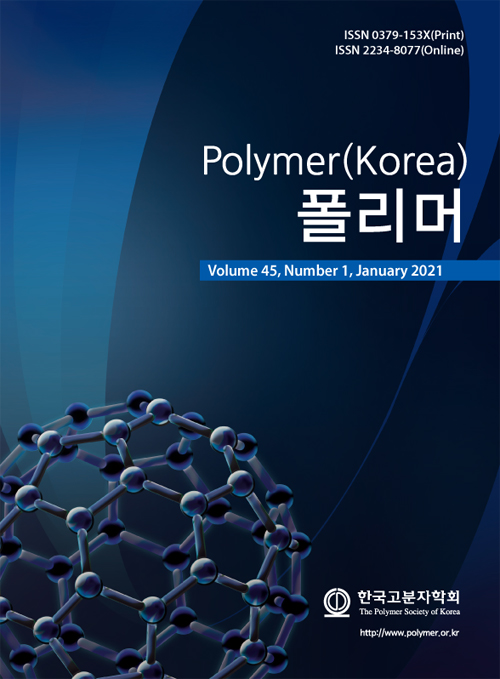- Release Behavior of Cinacalcet Hydrochloride Using Wet Granulation
Ji Eun Lee# , Suyoung Been# , Jeongmin Choi, Hunhwi Cho, Namyeong Kim, Jeong Eun Song, and Gilson Khang†

Department of Bionanotechnology and Bio-Convergence Engineering, Department of Polymer Nano Science & Technology and Polymer Materials Fusion Research Center, Jeonbuk National University, 567 Baekje-daero, Jeonju 54896, Korea
- 습식과립을 이용한 시나칼세트염산염의 방출거동
전북대학교 바이오나노융합공학과, 고분자나노공학과, 고분자융합소재연구소
Cinacalcet hydrochloride, known as a treatment for a secondary hyperparathyroidism in a chronic renal failure, is a poorly soluble drug with the properties of BCS class IV. To improve poor solubility, in this study, after preparing a wet granule of soluble polymer and poorly soluble drug cinacalcet hydrochloride, tablets were designed by mixing additives by proportion. Chemical changes occurring in the wet granulation process were evaluated using FTIR, and DSC and XRD were performed to confirm that the granules were formed as designed. After this, the release was tested through HPLC in an artificial gastric acid (pH1.2) to confirm that the tablet was properly designed. As a result, it was confirmed that the formation of the wet granules using a soluble polymer was effective for the release of cinacalcet hydrochloride, a poorly soluble drug.
만성신부전환자의 이차성 부갑상선 기능 항진 치료제로 알려진 시나칼세트염산염은 BCS class Ⅳ의 특성을 갖는 난용성 약물이다. 난용성 개선을 위하여, 본 연구에서는 수용성 고분자와 난용성 약물 시나칼세트염산염으로 습식과립물을 제조한 후, 첨가제를 비율별로 혼합하여 정제를 설계하였다. FTIR을 이용하여 습식과립 공정에서 일어나는 화학적 변화를 평가하였고, 정상적으로 과립이 형성되었는지 확인하기 위하여 DSC와 XRD를 진행하였다. 이 후 정제가 제대로 설계되었는지 확인하기 위하여 인공위액(pH1.2)에서 방출 실험을 진행하였으며 HPLC를 통하여 측정하였다. 결과적으로 수용성 고분자를 이용한 습식과립물의 제조가 난용성 약물인 시나칼세트염산염의 방출에 효과적인 것을 확인할 수 있었다.
Keywords: cinacalcet hydrochloride, wet granules, dissolution rate, soluble polymer, poloxamer
- Polymer(Korea) 폴리머
- Frequency : Bimonthly(odd)
ISSN 0379-153X(Print)
ISSN 2234-8077(Online)
Abbr. Polym. Korea - 2023 Impact Factor : 0.4
- Indexed in SCIE
 This Article
This Article
-
2021; 45(1): 16-21
Published online Jan 25, 2021
- 10.7317/pk.2021.45.1.16
- Received on Jun 22, 2020
- Revised on Sep 1, 2020
- Accepted on Sep 25, 2020
 Correspondence to
Correspondence to
- Gilson Khang
-
Department of Bionanotechnology and Bio-Convergence Engineering, Department of Polymer Nano Science & Technology and Polymer Materials Fusion Research Center, Jeonbuk National University, 567 Baekje-daero, Jeonju 54896, Korea
- E-mail: gskhang@jbnu.ac.kr









 Copyright(c) The Polymer Society of Korea. All right reserved.
Copyright(c) The Polymer Society of Korea. All right reserved.